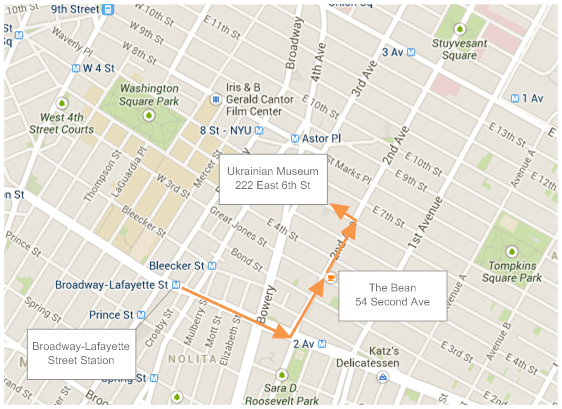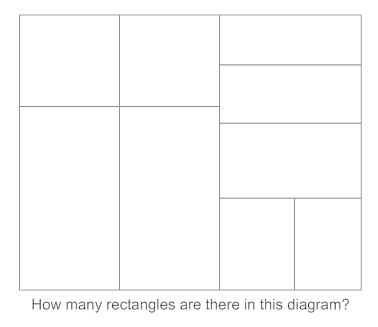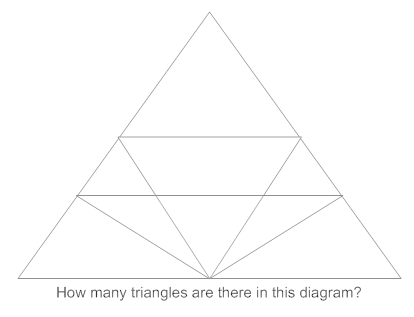Whether or not you know it, you're probably a visual thinker. Most of us are.
More importantly, most people with whom we interact on a daily basis are also visual thinkers. So communicating visually offers a significant advantage for those who do so.
In psychology, visual thinking is that which results from perceiving or processing visual stimuli, forms, or patterns. Or in layman's terms, "a picture is worth a thousand words."
Using visuals makes information easier to convey, process, and remember.
But what does this mean to you? Let's take a look at some examples to determine whether you are a visual thinker.
Which of the following do you find easier. Directions given verbally (or written down) or shown on a map?
Q. Can you tell me how to get from the Broadway-Lafayette Station to the Ukrainian Museum, with a quick stop for coffee at The Bean?
A. Sure. From the station, you want to go east on Houston Street across Bowery, then take a left on Second Avenue. You'll go about three blocks to The Bean. Then, to get to the Ukrainian Museum, you'll want to continue north on Second to Sixth Street, then go left. The museum will be about mid-block between Second and Third, on the right.
Or you could use a map, which lets you "see" where you are and where you want to go.

A new house is built on an empty, graded lot. Few of us are gifted with the artistic or creative skill to look at it and imagine an attractive landscape. Even if the landscape designer meets us on site and gives us this description:
I see an inverted "V" shaped walk path to the front porch, with some large stones, Japanese maples and shrubs in the path divide. We'll use freeform turf along each side of the path and wrapping around the sides of the house. A variety of trees and shrubs will be placed along the front of the house—inkberry, fatsia, summersweet. Along the perimeter of the site we'll incorporate larger trees such as abelia, goldenrain, and tea olives. Off the dining area we'll do a patio with a pergola.
Or do you find it easier to visualize the finished product with a landscape plan, such as this?
Have you ever tried to explain something to someone, then in the middle of the instruction, stopped to look for a pencil and paper so you could draw a picture or diagram to make it clearer? Here's an example of a process that might need to be explained to a new employee at work.
When you receive a report request, first submit it to engineering. The engineer will run a database query and produce a report. You'll need to review and validate the report. If it needs refining, send it back to the engineer. Don't accept it until it meets all of the requirements. Once it's acceptable, you can send it back to the person who requested it for presentation to management.
Or you could hand them a workflow diagram, like this.
You've probably seen some version of these puzzles before. This one came from an article written by Marcel Danesi, Ph.D. in an article published in Psychology Today. It's an interesting read. These puzzles challenge us with "whole-part" thinking. Take a look. How many rectangles and triangles do you see?


As Professor Danesi points out, these can be frustrating, because it's not uncommon to come up with a different answer each time you count the smaller pieces of each diagram. These types of puzzles challenge us to look past the obvious, to avoid "not seeing the forest for the trees."
I've included these puzzles to illustrate an important point. A visual isn't necessarily just a picture. It's a form of communication that may take many shapes. A visual thinker doesn't just look at a picture. He or she processes the information contained within it.
But regardless of the form it takes, the visual is a powerfully effective way to communicate almost any kind of information. Fortunately, today's technology allows anyone to easily communicate using a wide variety of visuals.
This article is just an illustration, not a scientific test. But chances are you and those around you think and learn visually. Using even simple visuals will enhance the clarity and effectiveness of information you communicate.
Using visuals also makes communicating information more interesting and enjoyable.